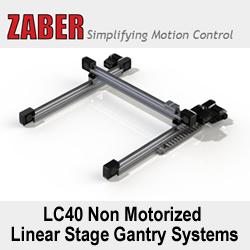The essential thing to remember is that humans will remain central to success, regardless of the level of technology deployment and there is not a silver bullet. So, what is the answer for best leveraging technology innovation?
 Investing in Industry 4.0? Successful Digitization Requires Discipline
Investing in Industry 4.0? Successful Digitization Requires Discipline

Edwin Bosso, CEO | Myrtle Consulting Group
In September 2018, The Guardian asked, “Do Robots dream of Prada?” The article discussed the arrival of artificial intelligence and other recent technological innovations in the fashion world. In the last five years, questions of the same nature have been asked about various industries, including those served by our consulting firm. For many leaders, there is pressure to leapfrog quickly past evaluating the applicability of a new technology to designing plans that promise exponential value creation from it. The essential thing to remember is that humans will remain central to success, regardless of the level of technology deployment and there is not a silver bullet. So, what is the answer for best leveraging technology innovation? Consider these three steps:
Step 1: Solidify the Foundation. Creating a management routine is the fundamental first step and includes developing and implementing a structure of communication, decision making and accountability that keeps the organization running. This is called a Management Operating System (MOS). It is the structure of metrics and related interactions that allow a company to keep its operating priorities aligned with its strategy. Assume your organization has gone through this first fundamental step and is keeping a pulse on the operation. You’ve created a stable environment in which process deviations naturally find their way into MOS meetings; actions are defined and problems are solved.
The peaceful and calm environment described above is likely not the one you live in. Most of us operate in environments of internal and external disruption related to the need for continuous improvement. The need to test, adapt and scale new solutions add to the pile of disruptions, not to mention the complexities that arise from being unfamiliar with emerging technologies. However, it is possible to regain control of your priorities by executing the next step.
Step 2: Isolate Gaps and Issues. Once you’ve implemented measurement and decision-making routines, you need to efficiently manage distractions.
.png)
The best process to manage gaps identified through your MOS is to separate them into a distinct category (Bucket 2). This allows you to give them proper focus outside of your central routine and prevent them from inadvertently hiding other problems. Issues need to be isolated when the source or root cause is not fully understood. At that point, your continuous improvement resources, or other dedicated teams, can devote the necessary attention to Root Cause Analysis (RCA). For example, the issues of changeover on a specific line consistently taking longer than expected, or hundreds of bottles regularly falling off the conveyor for no apparent reason, should not require daily debate. Instead, resources must be assigned and the issues dealt with decisively. Anything short of this becomes a drag on the management routine.
The Central MOS (Bucket 1) must always remain focused on execution of the “normal” management routine. Plans in your central MOS should be adjusted to account for the expected loss associated with isolated issues until they are fully understood and addressed. When RCA is completed and the driver of the issue has been addressed, the outcome of the process is fed back into the MOS and plans are adjusted to account for the expected regain of performance.
Step 3: Isolate Strategic Opportunities. Whereas issues isolation and root cause analysis (Bucket 2) prevent the distraction of poorly understood or reoccurring problems, the Strategic Improvements category (Bucket 3) is designed to isolate operational improvements with expected long-term or strategic impact. This could include a capital improvement on a production line, experimental runs of a new product or validation and deployment of new technologies.
Strategic improvement items are often the “shiny objects” that are the organization’s biggest sources of excitement and frustration. Yet, they are mainly a source of frustration and confusion when they are not isolated from the Central MOS. Items categorized here are projects and should be defined and executed as such. Well-run manufacturing organizations have project design and execution procedures that include management systems tailored to each project and focused solely on its execution. As an example, imagine through the implementation of augmented reality technology that we expect to provide mechanics with real-time access to troubleshooting guides and support from reliability engineers. This objective would be mapped as a process, tested as an experiment, piloted and evaluated. Its implementation would then be planned.
This entire process is best conducted as a Strategic Improvement Project (Bucket 3) without impact to your Central MOS. The same is true for capital projects and other strategic improvement efforts. The connection to the Central MOS must only be made when you are comfortable enough with the results of the experiment to factor its outcome into a key performance indicator (KPI) adjustment. In the augmented reality example earlier, the technology must be considered completely irrelevant to daily operations until you are ready to commit to a specific reduction in troubleshooting time as a result of the improvement. The target adjustment is the only vehicle to connect Strategic Improvements to the Central MOS. When that step is made, the technology leaves the lab to create tangible business value.
As the world of technology evolves, manufacturing is opened up to new opportunities. It’s an exciting time but we must stay grounded and recognize that our industry has seen evolution and improvement before. In fact, evolution has been inherent to the life of the manufacturing organization. The technological progress of the last several years is only different with its promise of exponential improvement. As a basic principle, humans and operating disciplines will remain central to the process. The three-bucket approach described is a simple way to structure your MOS routines to make the best of any manufacturing improvement, including technology.
Organizations that can execute a fast, yet thoughtful and disciplined adoption of technology will reap valuable and sustained benefits from digitization.

About Edwin Bosso
Edwin Bosso is the founder, CEO and senior partner of Myrtle Consulting Group. He has had the privilege of trotting around the world growing up and has lived in the United States, Mexico, Brazil, Ivory Coast, France, Burkina Faso and the Netherlands. Edwin will tell you that his travels have taught him a lot about human interactions, which would prove useful later in his career as a change management professional. He is fluent in four languages.
The content & opinions in this article are the author’s and do not necessarily represent the views of ManufacturingTomorrow
Comments (0)
This post does not have any comments. Be the first to leave a comment below.
Featured Product

